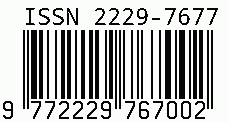
International Journal on Science and Technology
E-ISSN: 2229-7677
•
Impact Factor: 9.88
A Widely Indexed Open Access Peer Reviewed Multidisciplinary Bi-monthly Scholarly International Journal
Plagiarism is checked by the leading plagiarism checker
Call for Paper
Volume 16 Issue 4
October-December 2025
Indexing Partners



















AI-Based Diabetes Prediction: A Comparative Study of Machine Learning Algorithms
| Author(s) | Mr. Mohan Siddardha Sriramula |
|---|---|
| Country | India |
| Abstract | Diabetes has emerged as one of the most critical global health challenges, requiring early diagnosis and effective risk prediction to prevent severe complications. With the rapid advancements in Artificial Intelligence (AI) and Machine Learning (ML), data-driven approaches have shown significant potential in enhancing medical decision-making. This paper presents a comparative study of seven machine learning algorithms—Logistic Regression, Support Vector Machine (SVM), K-Nearest Neighbors (KNN), Naïve Bayes, Decision Tree, Random Forest, and Gradient Boosting—for diabetes prediction using a real-world dataset comprising 100,000 records with nine features. Each model was evaluated using accuracy, precision, recall, F1-score, ROC-AUC, and confusion matrix to provide a comprehensive performance analysis. The results indicate that ensemble methods, particularly Random Forest and Gradient Boosting, achieved superior predictive accuracy and robustness compared to traditional models. This study highlights the importance of model selection in AI-based healthcare systems and provides valuable insights for building reliable diabetes prediction frameworks. |
| Keywords | Diabetes Prediction, Artificial Intelligence, Machine Learning, Logistic Regression, Support Vector Machine, K-Nearest Neighbors, Naïve Bayes, Decision Tree, Random Forest, Gradient Boosting, Healthcare Analytics |
| Field | Engineering |
| Published In | Volume 16, Issue 4, October-December 2025 |
| Published On | 2025-10-31 |
| DOI | https://doi.org/10.71097/IJSAT.v16.i4.8021 |
| Short DOI | https://doi.org/g99qnm |
Share this


CrossRef DOI is assigned to each research paper published in our journal.
IJSAT DOI prefix is
10.71097/IJSAT
Downloads
All research papers published on this website are licensed under Creative Commons Attribution-ShareAlike 4.0 International License, and all rights belong to their respective authors/researchers.

